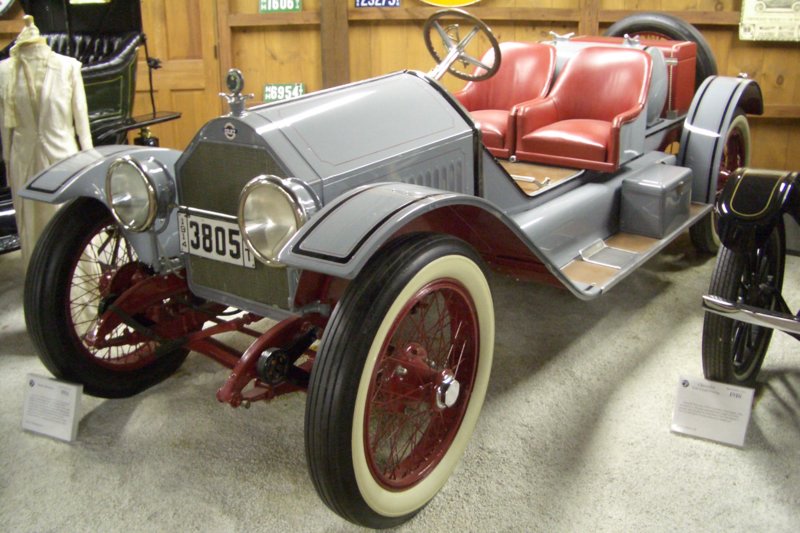|
Moderated by NW Okie! |
Volume 11 , Issue 362009Weekly eZine: (374 subscribers)Subscribe | Unsubscribe Using Desktop... |
1914 Transportation

Rembember the Stutz Bearcat, Pierce-Arrow and the Dodge Brothers of Michigan? They were all before my time, but those times backt then had some great names for Cars, huh?
The Stutz Bearcat was introduced with a design patterned on the White Squadron racing cars that won victories in 1913. Stutz also produced family cars while the Bearcat provided lively competition for the Mercer made at Trenton, New Jersey.
1914 Stutz Bearcat was priced new at $2000. The top speed was 45+ mph. I used a huge 4-cylinder, T-head engine made by Waukashaw. Each cylinder has over 100 cubic inches. Designed by Harry Stutz and known as the first sporstcar in the scant-body and scant-comfort idiom. Stutz designed the Bearcat to be a masculine machine from the drawing board and a rumor that he designed clutch springs so stiff that supposedly a woman could not operate it. It had a three-speed manual gearbox and two-wheel mechanical brakes.
The Pierce-Arrow's Herbert B. Dawley patented the fender-inset headlamps used in the 1913-14 Pierce-Arrow Model 48 B-2. They would hereafter be a distinctive mark of the luxury car that rivaled Packard in the high-priced motorcar market.
The U.S. auto production reached 543,679 with Model T Fords accounting for more than 300,000 of the total. The country had fewer 100,000 trucks, most of them delivery vans.
A large Dodge Brothers factory went up at Hamtramck, Michigan, where Horace and John Dodge pioneered in making all-steel bodied motorcars and achieved immediate success. Both brothers would die in 1920.
The Panama Canal opened to traffic August 3, 1914 just as Germany declared war on FRance. Built essentially on French plans at a total cost of $30,000 lives and some $367 million in US money (on top of the $287 million lost by the French in the 1889s). The canal used a system of locks to carry ships 50.7 miles between deep water in the atlantic and deep water in the Pacific.
The Houston Ship Canal opened to give Houston an outlet to Galveston Bay on the Gulf. The 50-mile canal would make the Texas city a deep-water port and a major shipping point for US grain.
The Cape Cod Ship Canal opened to link Buzzards Bay with Cape Cod Bay, Massachusetts. The 17.4-mile canal enabled coastal shipping to avoid the voyage round the Cape.
The White Star Line passenger vessel S.S. Britannic launched February 26, 1914 was a sister ship of of the S.S. Titanic that went down in 1912.
Greyhound Lines, Inc., had its beginnings in the Mesabi Transportation Co. founded at Hibbing, Minnesota, by Swedish-American diamond-drill operator Carl Eric Wickman, 30, who had opened a Hupmobile and Goodyear Tire agency but was unable to sell the Hupmobile. He ran the car on a regular schedule across the range to nearby Alice charging iron miners 15 cents one way, 25 cents roundtrip. Wickman took in a partner and soon built his own bodies and mounting them on a truck chassis. By 1918 he would have 18 buses operating in northern Minnesota with annual earnings of $40,000.
Gulf Oil Company distributed the first U.S. automobile maps. The 10,000 maps showed roads and highways in Allegheny County, Pennsylvania. Other oil companies soon followed Gulf's lead. Road maps distributed free by service stations would encourage automobile travel and gasoline consumption.
| View or Add Comments (0 Comments)
| Receive
updates ( subscribers) |
Unsubscribe
| © . Linda Mcgill Wagner - began © 1999 Contact Me | |
